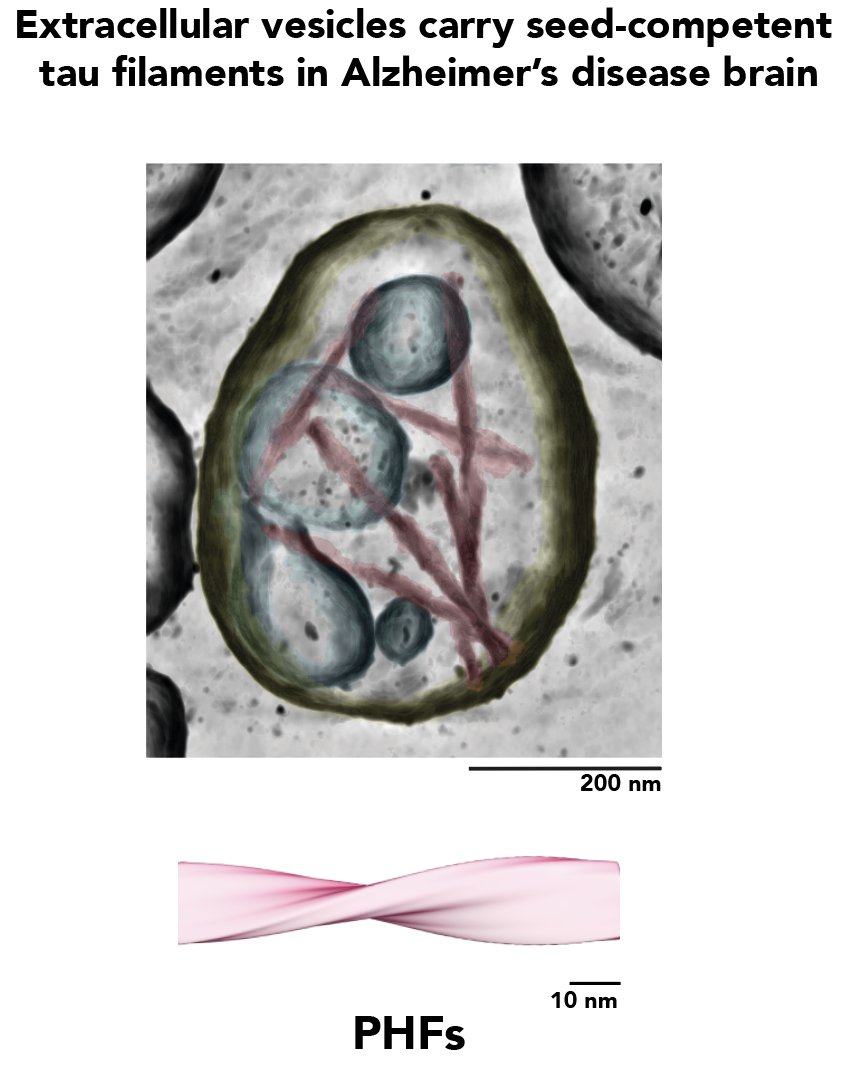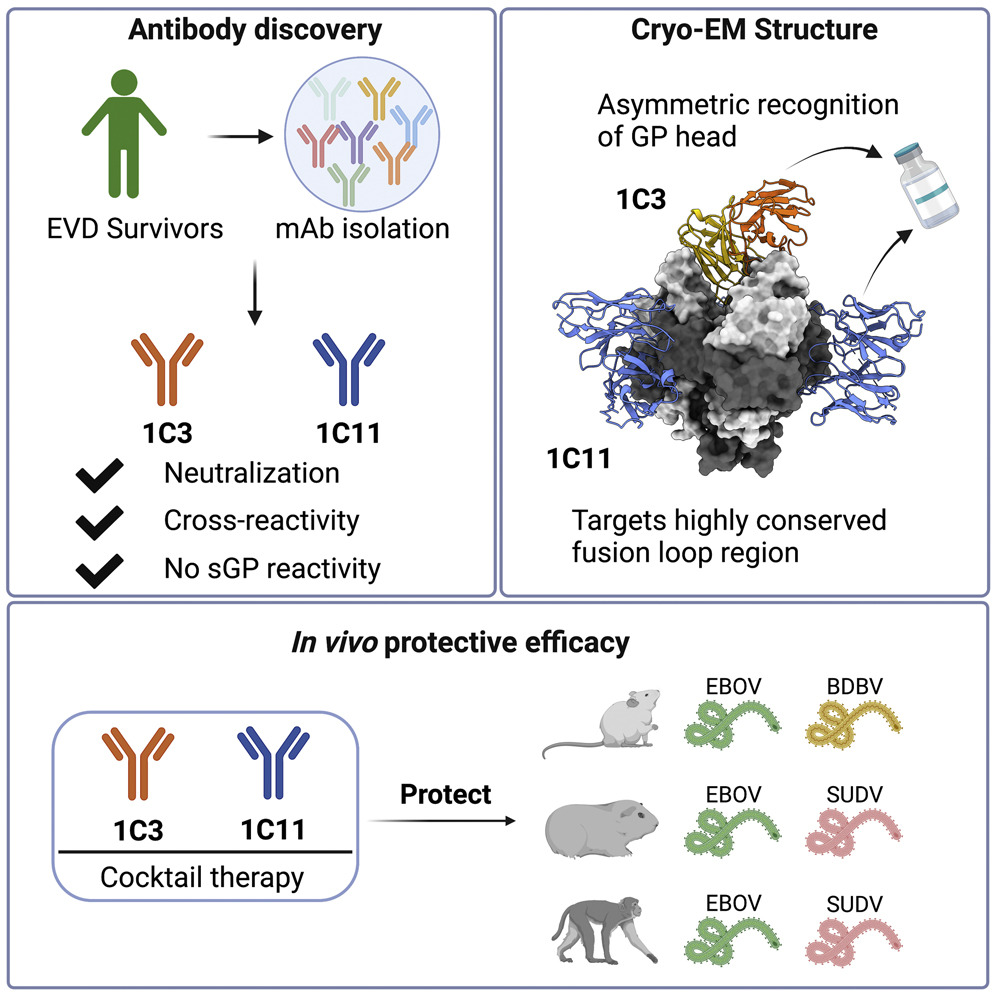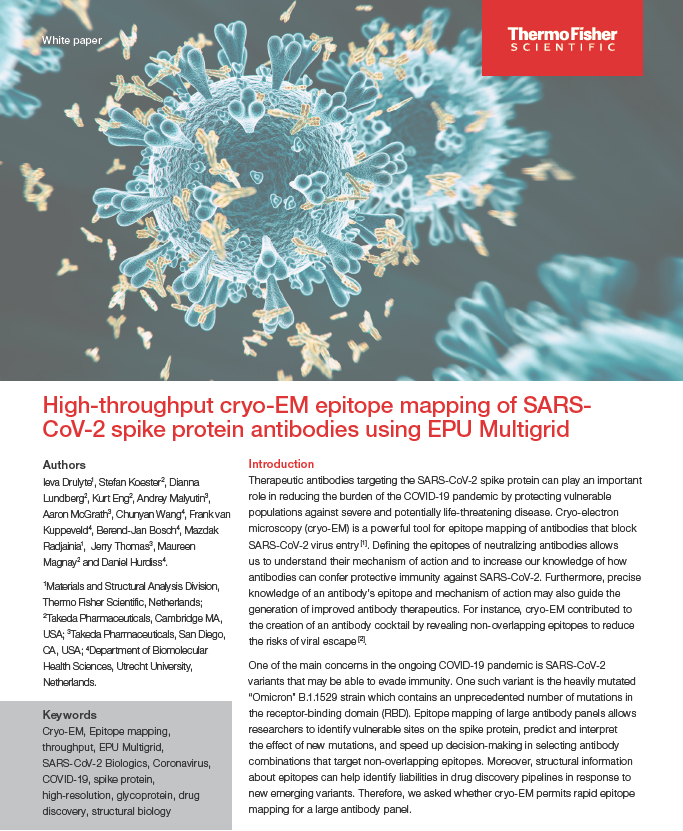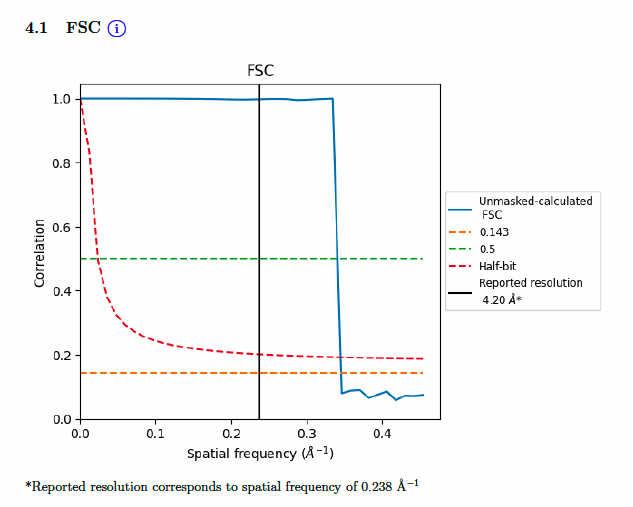Discover and read the best of Twitter Threads about #cryoem
Most recents (24)
As this thread is gathering all kinds of perspectives, below are mine, including on a bit of history. But before that, just to say that I very much value the hard work by all the people who make #cryoEM image processing better for everyone, both in academia and in industry.
In 2012, I introduced a regularised likelihood approach for #cryoEM structure determination, which formed the basis for #RELION. This approach proved to be hugely successful and is now the basis of many software packages, including also #cryoSPARC.
sciencedirect.com/science/articl…
sciencedirect.com/science/articl…

When #RELION started to replace #EMAN and #SPIDER, and before #cryoSPARC, I expressed in multiple talks that the #cryoEM field needed more diversity in software, as a monoculture is vulnerable. I used the picture below in my talk at the 2014 NRAMM course. 

Excited to share my first scientific manuscript out now on @biorxivpreprint, where we present the first ever #cryoEM structure of the iron #nitrogenase complex. Let me tell you about our newest insights into the mystery of biological nitrogen fixation: doi.org/10.1101/2023.0… 

Nitrogen is an essential building block for all life on Earth. However, activating molecular nitrogen (N2) and utilising it for biological means is a tremendous challenge due to the inert chemical properties of N2. How does nature deal with this?
Evolution has created a sophisticated class of metalloenzymes referred to as nitrogenases. Utilising some of the most complex metallocofactors known to nature, nitrogenases can reduce atmospheric N2 to bioavailable ammonia under ambient conditions.
So excited to announce our preprint describing tau in extracellular vesicles from Alzheimer's disease brain tissue! A thread... ➡️ @Duff_Lab @bwfalcon
doi.org/10.1101/2023.0…
#neuroscience #brain #science #extracellularvesicles #CryoEM #teamtomo
doi.org/10.1101/2023.0…
#neuroscience #brain #science #extracellularvesicles #CryoEM #teamtomo

We used quantitative mass spectrometry to profile 8 density fractions of human brain EVs: check out github to explore the data: github.com/duff-lab-team/…
Extra special thanks to @darraghpobrien and @EmirTurkes1!!
Extra special thanks to @darraghpobrien and @EmirTurkes1!!

ebi.ac.uk/emdb/EMD-28816 How did this get published in Chembiochem? The atomic model clearly doesn't fit at all into the density. #cryoem
Curious about #COVID19 #SARSCoV2 therapeutic antibodies, bivalent vaccines & immune imprinting?
Here is our latest work on these topics in collaboration with @DavideCorti6 @msdiamondlab
Led by @AminAddetia @LucaPiccoli9 Brett Case @YoungjunPark11
1/
biorxiv.org/content/10.110…
Here is our latest work on these topics in collaboration with @DavideCorti6 @msdiamondlab
Led by @AminAddetia @LucaPiccoli9 Brett Case @YoungjunPark11
1/
biorxiv.org/content/10.110…
Currently circulating #SARSCoV2 variants are evolving from the Omicron BA.2 and BA.5 lineages, through independent accumulation of amino acid mutations at shared receptor-binding domain (RBD) hot spots, underscoring the importance of antibody-mediated selective pressure.
2/
2/

We first studied how mutations in the #SARSCoV2 BQ.1.1, XBB.1(.5) and BA.2.75.2 variants affect function.
@AminAddetia @johnbowenbio in our lab previously showed that BA.5 affinity for ACE2 was >> Wu but fusogenicity was worse
3/
science.org/doi/10.1126/sc…
@AminAddetia @johnbowenbio in our lab previously showed that BA.5 affinity for ACE2 was >> Wu but fusogenicity was worse
3/
science.org/doi/10.1126/sc…
With 2022 coming to an end, we decided to share our lab's favorite papers of the year! #MitoMonday #LateNightWithTheRutterLab So without further ado, and in no particular order, here are our 10 favorite papers of 2022:
1-The @FoxLabDuke and Co report that genes enriched in rare codons achieve tissue-specific expression in the testis of flies and humans, as well as the fly brain! @alaederach @Pr0fJess @m_f_rogers @Duke_CMB @Duke_PCB @elife
bit.ly/3vn5ZUw
bit.ly/3vn5ZUw
2-@kaymakirrm and @KawaZbozowa from the @DrRGJonesLab grew CD8+ T-cells in physiological media and discovered that less glucose carbons enter the TCA cycle in the presence of alternative carbon sources including lactate! @VAInstitute @Cell_Metabolism
bit.ly/3hQtmmx
bit.ly/3hQtmmx
The peer-reviewed version of our manuscript describing the influence of the #SARSCoV2 spike glycoprotein conformation on vaccine- and infection-elicited antibody responses in humans is out!
Led by @johnbowenbio
@HHMINEWS
@UWBiochemistry
science.org/doi/10.1126/sc…
1/
Led by @johnbowenbio
@HHMINEWS
@UWBiochemistry
science.org/doi/10.1126/sc…
1/
During the review process, we expanded our panel of vaccinee plasma samples to also include subjects that received 2 doses of Jansen Ad26.COV2.S. or of Novavax NVX-CoV2373, thereby covering all 4 vaccines authorized or approved in the US (and several others used worldwide)
3/
3/
Very glad to have contributed to this paper, which David Eisenberg (citing Churchill) called "the end of the beginning" in the fight to cure Alzheimer's - just published in @NatureComms!
1/
nature.com/articles/s4146…
1/
nature.com/articles/s4146…
The paper started when @SeidlerPM decided to see just how the natural product EGCG, produced prominently in green tea, could be such a potent disaggregator of the usually hyper-stable Alzheimer's disease tau amyloid fibrils.
2/
2/
EGCG was interesting because it disaggregates a wide variety of amyloid fibrils with no external energy input - unlike chaperones which require ATP hydrolysis, for instance.
He thought if we could learn how it disaggregates amyloid fibrils, we could use that knowledge...
3/
He thought if we could learn how it disaggregates amyloid fibrils, we could use that knowledge...
3/
Excited to share our work detailing cryoEM of nitrogenase under catalytic turnover conditions! This collaborative work has enabled the structural characterization of the nitrogenase reaction intermediates at high resolution for the first time. biorxiv.org/content/10.110…
First, I want to say it has been an amazing collaboration with @HannahRutrut (now Ph.D.!), @BCryoEM, @HoangPMNguyen, and @TezcanLab. We paired the best of our strengths to tackle this technically challenging project. Lots of exciting and unexpected results. #teamnitro
We analyzed human plasma, mucosal and memory antibody responses against #SARSCoV2 and found a pan-variant neutralizing antibody!
Led by @YoungjunPark11 Dora Pinto @coronalexington @JZhuoming
Collab. with @DavideCorti6
@HHMINEWS
@Vir_Biotech
1/24
biorxiv.org/content/10.110…
Led by @YoungjunPark11 Dora Pinto @coronalexington @JZhuoming
Collab. with @DavideCorti6
@HHMINEWS
@Vir_Biotech
1/24
biorxiv.org/content/10.110…
We assessed plasma neutralizing activity from humans previously infected in 2020 (WA-1-like) and then vaxed 2x or 3x, or vaxed before Delta or #Omicron BA.1 breakthrough infection or vaxed-'only' 3x
2/24
2/24
1/ How do proteins take their shape in the cell? Insights from our article with @JackJKelly @TheYueLab @UniofOxford @v_paavilainen @HiLIFE_Helsinki @LHapponen @lunduniversity @structbiolbxl @imperialcollege @pfizer nature.com/articles/s4159… #OpenAccess 🧵👇 

2/ #AlphaFold can predict the folded protein shape, but not the complicated folding process itself. Often cells use protein complexes called chaperonins to help other proteins to fold. Here we purified a chaperonin called TRiC from cultured human cells.
3/ Purification was possible only by using #CRISPR genetic scissors. We introduced a purification handle in one of the 8 TRiC subunits. This allowed purification of the endogenous chaperonin as opposed to an engineered version of it. Quite a TRiCK! #samplerevolution
New #Ebolavirus research shows how 2 powerful antibodies can neutralize #Ebola—and Sudan virus bit.ly/3wg9Lkz
“Finding antibodies with this breadth is important because we don’t know which virus in the genus of ebolaviruses is going to break out next."
1/🧵
“Finding antibodies with this breadth is important because we don’t know which virus in the genus of ebolaviruses is going to break out next."
1/🧵
To save lives, doctors need broad-spectrum therapies that neutralize as many Ebolavirus species as possible.
This @CellPressNews study shows 2 potent antibodies that can neutralize the well-known Ebola virus and Sudan virus (also responsible for large, deadly outbreaks.
This @CellPressNews study shows 2 potent antibodies that can neutralize the well-known Ebola virus and Sudan virus (also responsible for large, deadly outbreaks.

The team used #CryoEM to get a clear view of these two antibodies in complex with the #Ebolavirus glycoprotein.
1 antibody, called 1C11, neutralizes the virus by binding with a site on the fusion machinery the virus would normally use to enter and infect host cells.
1 antibody, called 1C11, neutralizes the virus by binding with a site on the fusion machinery the virus would normally use to enter and infect host cells.

We made the cover! Presenting the #photosystem of Gemmatimonas phototrophica, a funky little bacterial alga (the first discovered example of its genus) found in the Gobi desert a little under a decade ago. This one's been quite the journey, so buckle in. (1/) 

What I'd mostly like to talk about is the saga of how this model came to be... but first, a little about what makes it special. At first glance, it's fairly similar to other bacterial photosystems: a central reaction complex (RC) surrounded by a light-harvesting (LH) ring. (2/)
What's brand new here is the way it increases its light-harvesting capacity. All other known photosynthetic bacteria have a single LH ring around the RC (termed LH1), and then make smaller "satellite" rings (LH2) which hang around the edges. (3/)
Delighted to share our study of the #SARSCoV2 E406W spike mutant describing how a single amino acid mutation mediates escape from the REGN10987/REGN10933 antibody cocktail despite residing outside their epitopes
Led by @AminAddetia
1/8
biorxiv.org/content/10.110…
Led by @AminAddetia
1/8
biorxiv.org/content/10.110…
The E406W mutation was previously described by @tylernstarr @AllieGreaney (along with @AminAddetia during his rotation in) @jbloom_lab using deep-mutational scanning and neutralization assays.
2/8
science.org/doi/10.1126/sc…
2/8
science.org/doi/10.1126/sc…
We determined a #CryoEM structure of the E406W spike trimer and observed a remodeling of the receptor-binding domain (RBD), hindering binding of clinical antibodies such as the REGN10987/REGN10933 cocktail or COV2-2130
3/8
3/8

A thread on how we determined 12 sub-3 Å spike-Fab #cryoEM structures from a single microscopy session❗️ Using #EPUMultigrid, we performed high-throughput epitope mapping for a panel of neutralising antibodies targeting the #SARSCoV2 spike protein 🧵
thermofisher.box.com/s/a8mws76g5ew8…
thermofisher.box.com/s/a8mws76g5ew8…

The inspiration for this project came from our previous observation that the 6P-stabilised #SARSCoV2 spike (@McLellan_Lab) could produce ~3 Å structures from less than 2 hours of data collection👇
Over the last two years, through trial and error and searching the literature, we perfected the recipe for reproducible spike-Fab complexes: 24 μM 6P spike + 150 μM Fab + 0.01% fluorinated octyl maltoside (added just before plunging). 🧑🍳
Have you heard of the recently discovered 8th human-infecting #coronavirus designated CCoV-HuPn-2018?
We reveal the architecture of its spike (ie infection machinery), receptor usage and antigenic properties!
Led by @aletortorici
1/12
biorxiv.org/content/10.110…
We reveal the architecture of its spike (ie infection machinery), receptor usage and antigenic properties!
Led by @aletortorici
1/12
biorxiv.org/content/10.110…
CCoV-HuPn-2018 is a canine-feline recombinant alpha-#coronavirus isolated from the respiratory swab of a child hospitalized with pneumonia, indicating that more coronaviruses are spilling over to humans than previously appreciated.
2/12
academic.oup.com/cid/advance-ar…
2/12
academic.oup.com/cid/advance-ar…
We determined #cryoEM structures of the CCoV-HuPn-2018 spike in two markedly different conformational states which we propose to correspond to two snapshots of viral entry.
3/12
3/12

We identified a broadly neutralizing sarbecovirus antibody (S2K146) in collaboration with Matteo Samuele Pizzuto & @DavideCorti6
Work led by @YoungjunPark11 Anna De Marco @tylernstarr @JZhuoming
1/7
biorxiv.org/content/10.110…
Work led by @YoungjunPark11 Anna De Marco @tylernstarr @JZhuoming
1/7
biorxiv.org/content/10.110…
S2K146 binds and broadly neutralizes several SARS-CoV-1-like and SARS-CoV-2-like viruses (clades 1a/1b). It inhibits BtKY72 (clade 3) K493Y/T498W S pseudovirus, as we previously showed that these 2 mutations enable this bat virus to use hACE2.
biorxiv.org/content/10.110…
2/7
biorxiv.org/content/10.110…
2/7

Our #cryoEM structure reveals that S2K146 'mimics' ACE2, as 75% of the residues participating in the epitope are also part of the ACE2 binding site, and is therefore not affected by known variants.
3/7
3/7

Sharing our latest preprint on #SARSCoV2 B.1.617.2 (delta), B.1.617.2+ (delta+) and B.1.617.1 (kappa) variants led by @Dr_MattMcCallum
1/9
biorxiv.org/content/10.110…
1/9
biorxiv.org/content/10.110…
We show that vaccine-elicited neutralizing activity is reduced against delta and kappa and even more against delta+ relative to the vaccine-matched pseudovirus. Delta+ reduces neutralization ~ to B.1.351 (beta) which has the greatest magnitude of immune evasion thus far.
2/9
2/9

Half of the J&J-vaccinated individuals in our panel had no residual variant neutralization. Although we only analyzed neutralizing antibodies (T cells are also key players for in vivo protection), this supports offering second vaccine dose
3/9
abc7news.com/coronavirus-sf…
3/9
abc7news.com/coronavirus-sf…
Here it is: The #cryoEM structure of the ChAdOx1 @AstraZeneca #vaccine vector, and it's cell binding fiber knob protein.
We show how this vector can bind to human cells and suggest a how it may bind to PF4. We discuss how this may play a role in #VITT
biorxiv.org/content/10.110…
We show how this vector can bind to human cells and suggest a how it may bind to PF4. We discuss how this may play a role in #VITT
biorxiv.org/content/10.110…
At risk of an Oscar worthy spiel: @rjboyd000, @17Dsarkar, @Aly25_09 deserve credit for fantastic work, and more for putting up with me every day.
Great to work transatlantic with the @virustinkerer @abhisekhsingha1 @BoradLab labs. 5 institutions contributed to this.
Great to work transatlantic with the @virustinkerer @abhisekhsingha1 @BoradLab labs. 5 institutions contributed to this.
I should also clarify: The capsid structure is a CryoEM solve. The fiber knob structure is crystallography, done at super high speed, by @Aly25_09 .
We report an analysis of #SARSCoV2 spike NTD antigenic sites targeted by monoclonal antibodies (mAbs) in #COVID19 patients in collaboration with @DavideCorti6 and Matteo Samuele Pizzuto @Vir_Biotech
Work led by @Dr_MattMcCallum & Anna De Marco
1/10
biorxiv.org/content/10.110…
Work led by @Dr_MattMcCallum & Anna De Marco
1/10
biorxiv.org/content/10.110…
As a team of scientists from @scrippsresearch @karolinskainst @UniBonn @UniklinikBonn @IIIBonn @uni_tue @Illinois_Alma, we identified four potent neutralizing camelid nanobodies ... 

Solved the #Xray structure of all four #nanobodies in complex with #SARSCoV2 spike #RBD @wchnihcholas and Ian Wilson ... 

Used #CryoEM to determine that VHH E stabilizes the 3-up conformation of trimeric #SARSCoV2 spike @BMartinHallberg ... 

📆 We’re looking back at some of our biggest stories of 2020 this week!
First up is a February 2020 paper from @YuukiObata1026 showing how our gut bacteria help to control the healthy contraction and relaxation of muscles in the colon 🦠🦠🦠crick.ac.uk/news/2020-12-1…
First up is a February 2020 paper from @YuukiObata1026 showing how our gut bacteria help to control the healthy contraction and relaxation of muscles in the colon 🦠🦠🦠crick.ac.uk/news/2020-12-1…
📆 Next up in our run-down of top research stories from 2020 – a Crick and @ucl team led by George Kassiotis and @KevinWNg found that some people (notably children) have antibodies reactive to SARS-CoV-2, despite never having been infected with the virus. crick.ac.uk/news/2020-12-1…
📆 We’re taking a look at some of the biggest science stories from the Crick this year, and today’s story features a new 3D imaging method for eyes 👀 developed by an international team including @Katie__Bentley, @EM_STP and @CALM_STP.
See the full list ⤵️crick.ac.uk/news/2020-12-1…
See the full list ⤵️crick.ac.uk/news/2020-12-1…
biorxiv.org/content/10.110…
In this Mmmanuscript we use our new tool M to break a couple of things, as is customary in #cryoEM. Most importantly, we show that 3.7 Å resolution can be achieved for a protein directly inside a cell. Software release next week. Now, thread:
In this Mmmanuscript we use our new tool M to break a couple of things, as is customary in #cryoEM. Most importantly, we show that 3.7 Å resolution can be achieved for a protein directly inside a cell. Software release next week. Now, thread:
M performs multi-particle refinement. One of single-particle analysis' central assumptions is that the particles are, in fact, single. This is physically never the case, and there is benefit in treating all items in a micrograph/tomogram as a connected system. 

This way deformation occurring during data acquisition can be modeled to improve registration of every particle's motion. Others* have done similar things over the years. M offers a unified framework for these concepts and aligns everything in one go.
So excited to finally share this work - structure of Cx46/50 gap junction intercellular channels in a dynamic lipid environment, resolved at 1.9 Å by #CryoEM! With some MD-simulation to make it dance ;) Check it out on BioRxiv: shorturl.at/iEW34
Lead by an extraordinary team of grad/undergrad students: Jonny Flores (@CryoEMJonny), Bassam Haddad (@BassBioPhys), Kim Dolan and Janette Myers – and our wonderful collaborators Craig Yoshioka (@craigky), Jeremy Copperman and Dan Zuckerman @psu_research, @OHSUSOM
We see a stunning effect of Cx46/50 on the local lipid environment - effectively inducing a phase separation (to the gel state) that is specific to the extracellular lipid leaflet of the two opposed membranes







